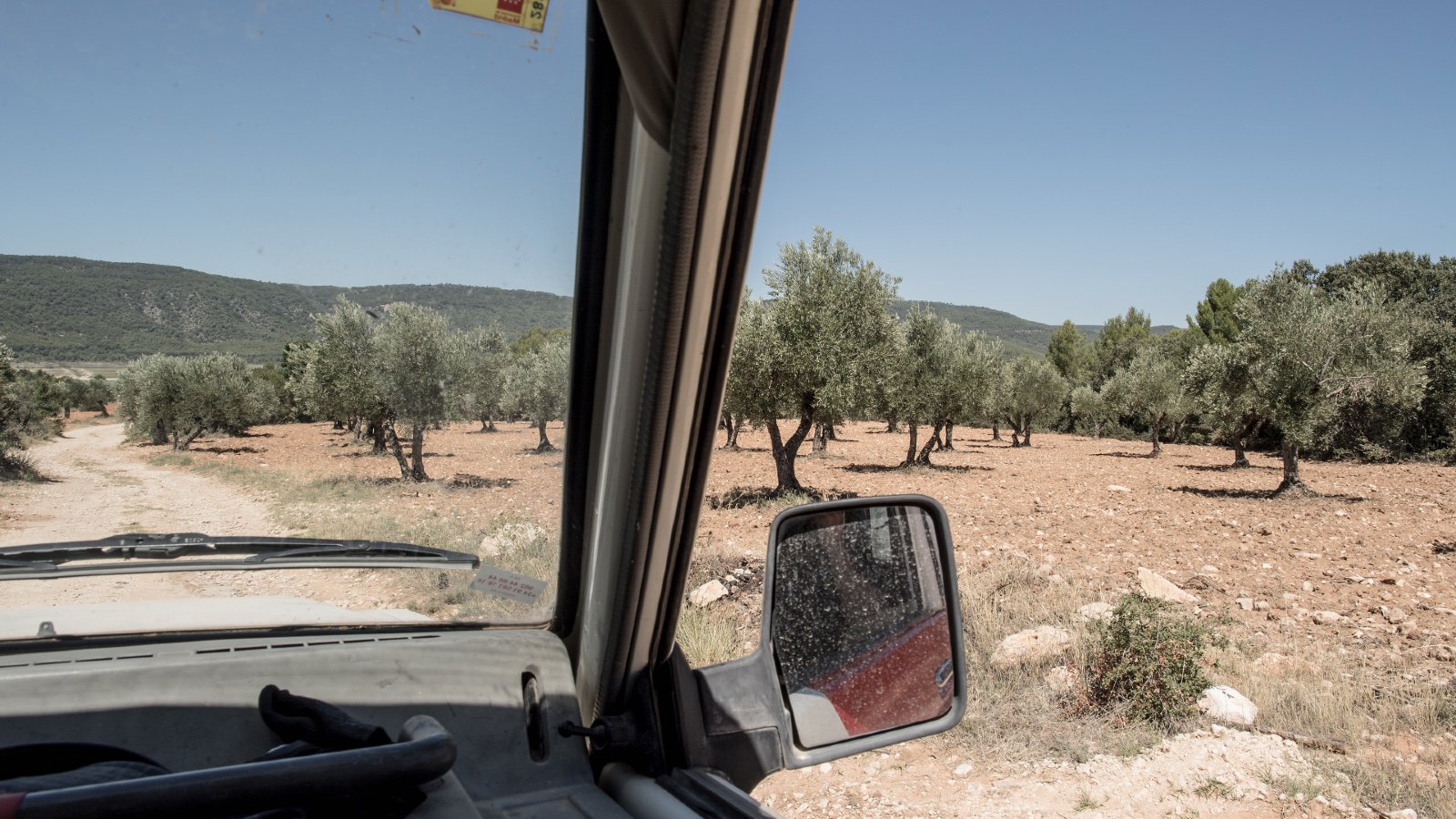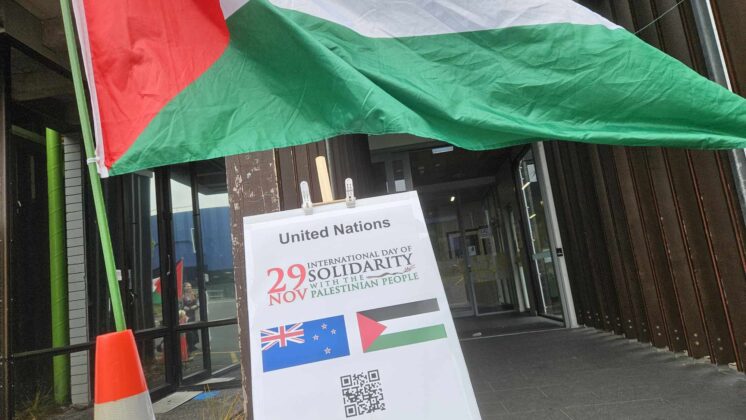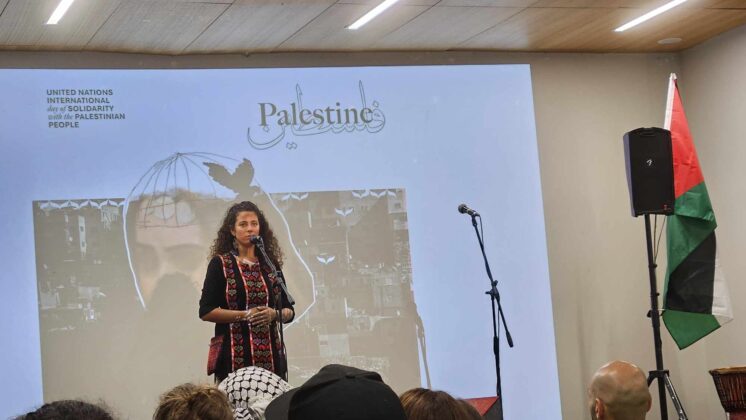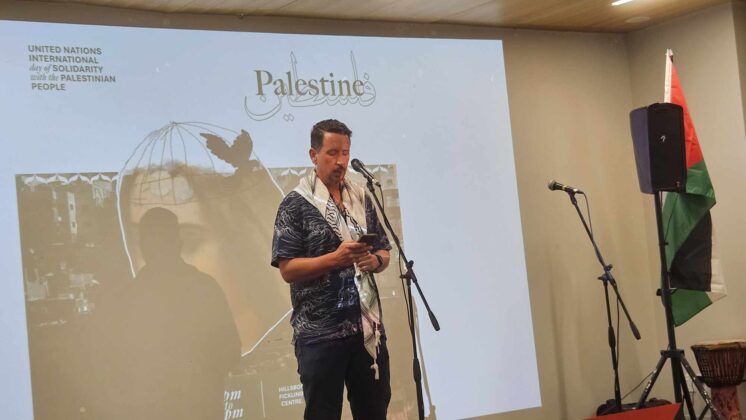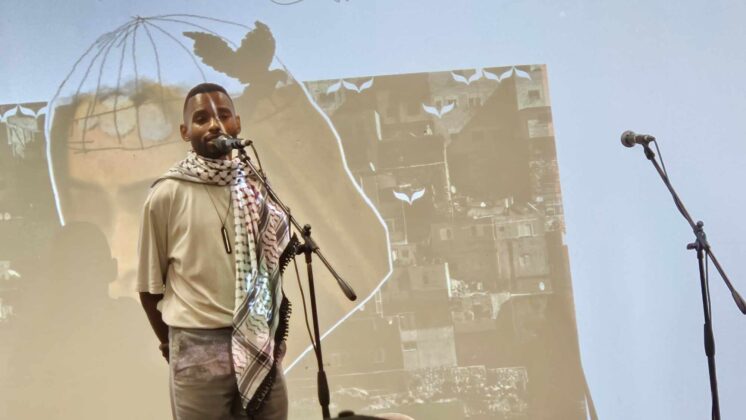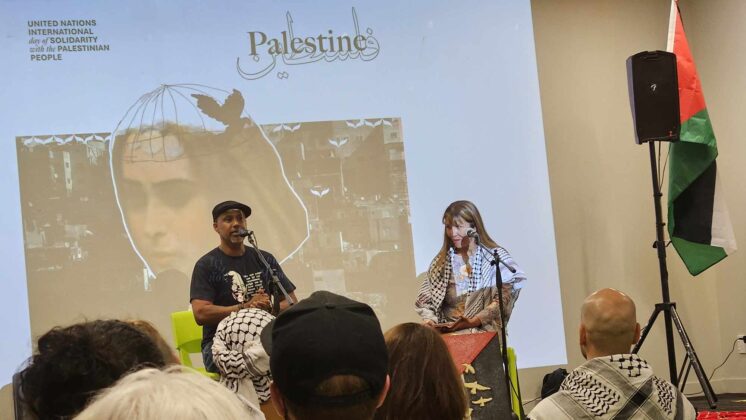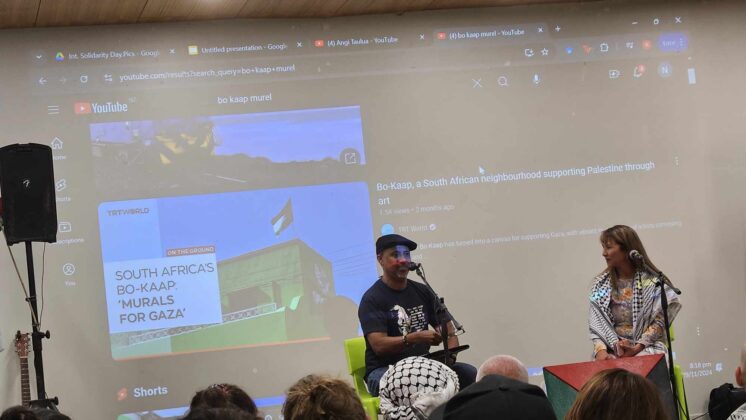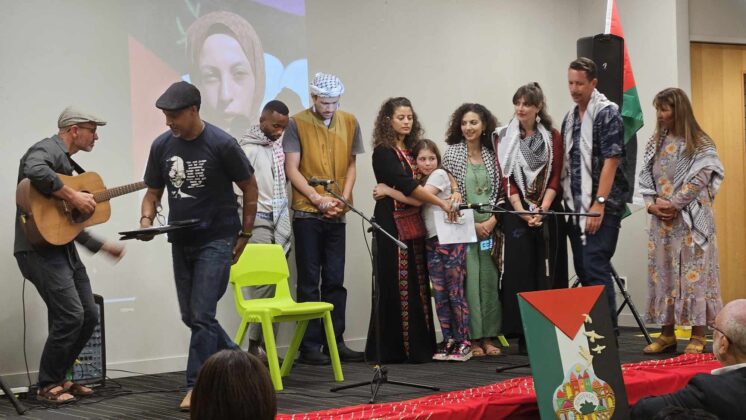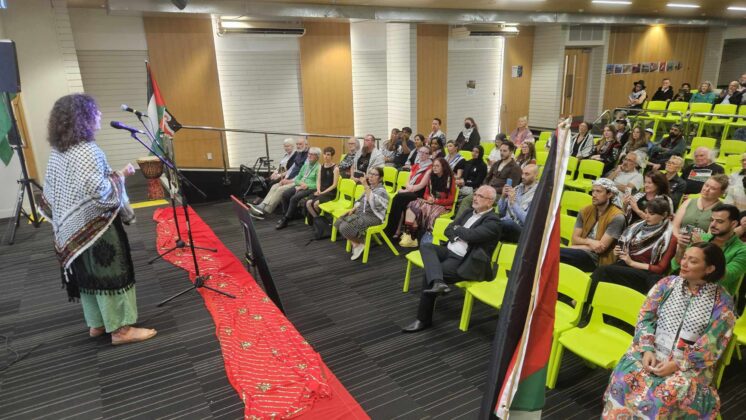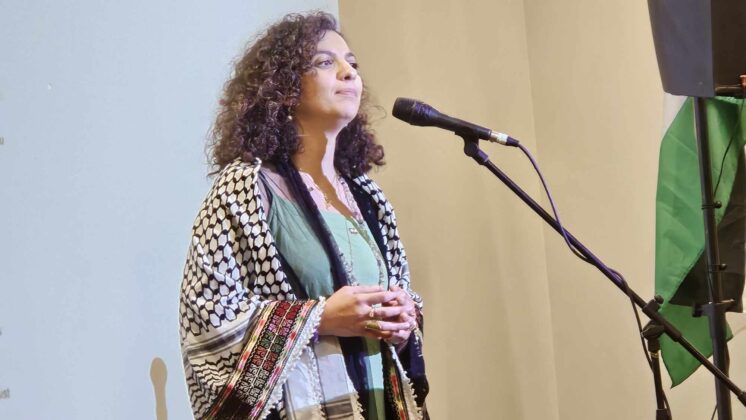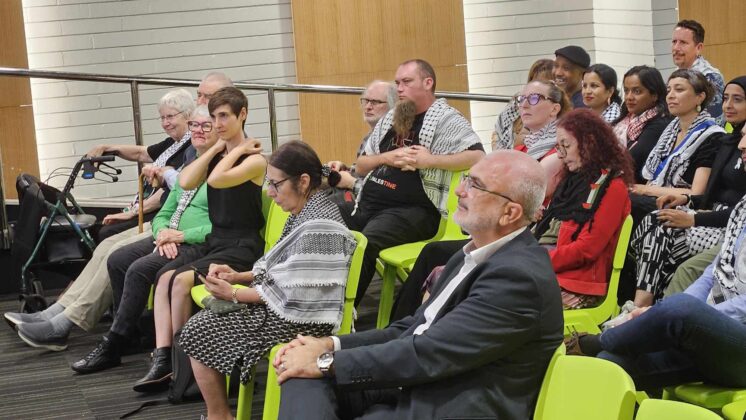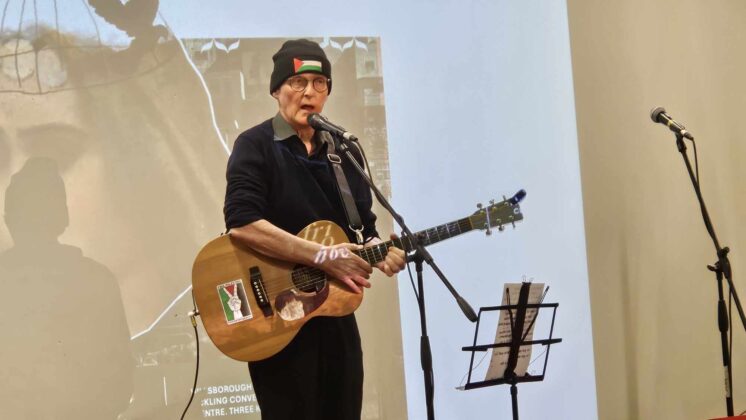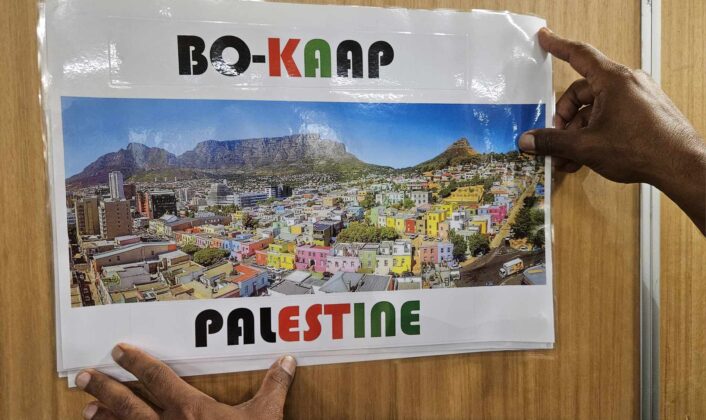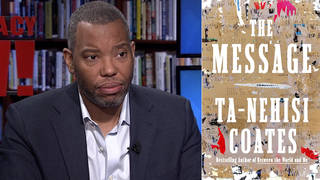You’ve made so much music with so many different people, including your new solo album. Is there a certain attitude you bring that is consistent throughout?
I’m going to go with an Albini quote. At Electrical Audio, the studio in Chicago [founded by Albini], they have a no-asshole policy. I think that’s probably a creative philosophy. It’s the first thing that comes to mind, because it’s a good first policy to think about even before you begin to think about other creative aspects of [of a project].
I think that’s a good policy no matter what you’re doing.
Sure, but it’s easy. I can think, “Well, they’re probably having a bad day,” or “Yeah, they can be…” It’s a whole group of people up there at Electrical Audio. They have two studios running. Steve doesn’t do every session. The way they book the bands, anybody can come in—it’s cool. Nobody has to be uber-professional. I could see why it really does help to be able to say, “Okay, we can rein in these contacts and the people that we’re going to be interfacing with here. The first thing is just no assholes.” When you think of it like that, it’s just a really good policy. I like that.
I used to go up there and say, “Oh my god, these people are so great. You know who’s great? This intern is so very cool.” Albini would say, “We have a no-asshole policy. That’s why.” It’s like, “Oh, yeah. Right.”
You worked with Albini on your new record, and you’ve worked with him in many different contexts in the past. Sadly, he passed recently. Why was he your go-to guy over the decades?
There’s an aesthetic, choices that he prefers and I prefer that work well together. If I go out and sing something in the studio and I want to come back and listen, there shouldn’t be reverb just put on it willy-nilly for no reason. If there is, I’ll say, “Can I hear it without reverb to see what’s there?” And it shouldn’t even be talked about like that. He knows that.
It’s more of the ideal that I’m trying to focus on, not the “Some people do this, and I don’t like that.” There’s also something else that he does that is good, and it drives me nuts, because he’s right all the time. Well, not all the time, but most of the time. When I’m singing, I have a tendency to go, “Can I re-sing that? The word got caught it in my throat.” There are all these things that I hear that [affect my] expectation of what should have just happened.
Of course, he doesn’t have that expectation. He’s just listening to it. It sounds fine to him. “Is it? I don’t think it’s in pitch.” He’ll say, “I don’t know what pitch is. I don’t know if it’s out of pitch or not. Sounds good to me.” I’ll say, “Can we punch this word in? It really drives me crazy, that smacking sound that I’ve just done. It’s just weird the way the word came out.” He does the punch, and now I didn’t have the right breath or the right closeness to the mic, so it just sounds different. I’ve made a black spot on the couch, and now we’re going to spend this much time trying to clean the black spot, and it wasn’t even that big of a deal to begin with. So, yeah—his ability to look at something and just appreciate that it was done. “You did it. That’s how it sounded, and it’s good.” That’s a good thing for me to hear.
I know from talking with him that he was a no-nonsense, straight-to-business kind of person. He liked to get in there and get the job done. Are you that way as well, or do you like to experiment more?
It’s not like I want to experiment, but in my mind’s ear I hear something, so that’s the direction I’m going for. Now, he can’t hear my mind’s ear. I can talk and I try to be transparent because if he’s not getting something or somebody’s not getting something, it’s because of my lack of communication. I need to explain it better, because most of the time, people just want to help out.
I remember I wanted to get some feedback on an amp, and he was just being weird, not wanting to do it, or something. I ended up getting it, but you could tell he didn’t want to spend the time. He was better alone when I was doing solo stuff. As a solo person bringing stuff to him, he was more relaxed about it because it could be anything. I just drove up five hours from Dayton, and he’ll say, “What do you want to do today, Kim?” He has no idea. He’s a recording engineer. He’s not a producer. He has no idea what we’re doing.
“I want to play drums.” “Okay, do you want [recording rooms] Alcatraz, Kentucky, or Center Field?” “I want Kentucky.” So, he opened up and he knew we were going to do all sorts of things, so he was willing to do more. I trained him to do it, because he knew I would never back off until we did it that way. But then when we did it, he really would say, “Oh, I see. That makes sense now when you put it all together like that.” On a weird song like “Spark,” on [the Breeders’ 2008 album] Mountain Battles, that’s just such a weird thing, and it’s hard to explain what I’m going to do. Then you just have to do it, whether you like it or not. Which I think he did, probably. It reminded him of something.
John Cameron Mitchell of Hedwig and the Angry Inch fame wrote your bio for the new album. He’s such a talented guy, obviously, but why was he your choice for this?
Back in the day, the East Los Breeders—that’s when we had Mando Lopez and José [Medeles] from East Los Angeles in the band—learned [the song] “Hedwig and the Angry Inch.” We had the guitar player singing it, and we did that live at a Breeders show. I think John just heard that we did it and came to a Breeders show at the Bowery in New York City. He stage-dived, but nobody caught him, of course. He landed on the ground, and we became friends. There’s even a photograph of him about ready to hit the ground. We wanted to make t-shirts and sell them. We thought that would be fun, so we’ve been friends ever since. He comes to visit in Dayton. He’s a dear friend.
You’ve put out solo material before, but Nobody Loves You More is your first official full-length album. Was that a daunting prospect for you at all? Obviously, you’ve made tons of albums. But this is the first one with your name on it.
With my name on it, yeah. I mean, I’m from the Midwest. I like rock bands. Nazareth, Outlaws, UFO. I only liked bands, so I only wanted to do bands. It was weird. After [the Breeders’ 1993 album] Last Splash and the Amps, then I worked with the East Los Angeles guys, but I was also doing Pixies. I did one last Pixies tour called The Lost Cities Tour, the last tour we were to do, and then I had no band.
José, the drummer for the East Los guys, moved to Portland, Oregon, and he started a gorgeous drum shop called Revival, and had a kid. In 2011, he said, “You want me to come out with the kid and rehearse for three weeks?” Then I went to Los Angeles and did some solo recording. José’s drumming on some of it. I met another drummer out there, and I started putting out these 7-inches. I think the gateway drug was the first 7-inch. At one point, I did a song and thought, “This should be an album track.” Then everything after that followed in that path.
My favorite song on the album is “Crystal Breath,” which I understand was originally written as a theme song for the TV show Physical—and rejected. Rejection is pretty much built into the creative life, so I was hoping you could talk about that experience a little bit.
It was an odd thing to be asked. I wasn’t really into it at first. TV theme? They don’t really do TV themes, do they? That’s weird. Then they said that Rose Byrne was the actress in it, and I’m like, “I’ll do anything you want me to do if she’s in it.” So, I tried. I didn’t take the rejection as that bad because they just went in a different direction. They started using material from the ’80s, from the time period of the show, so it’s not like they [hired somebody else] or anything. There’s been other rejections that were harder. That wasn’t that hard because it felt like they just declined, and they were going to go a different way. But I do talk about failure on this record.
If the album had a theme, that would be it.
I’m intrigued by it. There’s something about George Jones, Waylon Jennings, and those outlaw country guys where they were living in bravado and they’re just manly men. Then they’re aging and you see the toll that it’s taken on their existence spiritually and physically—the liver enzymes making their eyes a little yellow—and they’re on their third wife and they’re just older. There’s something so sweet about it and so endearing.
I think maybe to try things, it’s worth the failure. To me, failure reads as: At least you fucking tried it, even if you got fucking beat up because you were in the fight to try something. There’s something really sweet and endearing about somebody who got their ass kicked. They were out there trying. I can relate to that in some capacity, because it’s speaking to me. I don’t know why. I can look at all the little failures of my life, but that’s not what I think about. I read it as, “Oh, you look so cool all beat up.”
The album artwork was designed by Alex Da Corte, and it’s based on the story of another artist, Bas Jan Ader. [In 1975], Bas decided he’s going to cross the Atlantic Ocean in a small boat, in search of the miraculous. His wife takes this photograph of him, and he’s never seen again. They just find the washed-up sticks of his boat. I just think, “Wow, that’s some fucking committed shit right there.” The guy went for it and failed miserably. So, the album cover is me on the boat—the doomed voyage.
You’ve used various pseudonyms over the years—”Mrs. John Murphy” on the first couple of Pixies releases, “Tammy Ampersand” with the Amps. Why did you do that, and how is it related to your artistic identity on those records?
Back in the day—I’m talking like ‘87 or whatever—it’s super spandex and big looks, right? Just before that, you had bands like Asia and Styx. It just didn’t seem very tough or cool to me. With punk, there was John Doe [of X], Poison Ivy [of the Cramps] and, of course, Iggy. It’s like all the cool people, they didn’t need to put their name on it. Who gives a shit, right?
I thought it was cool, so we started talking about it. I think [Pixies guitarist] Joe [Santiago] went with “Joey,” and we made fun like [drummer] David [Lovering] could be David Sticks Lover, but he didn’t do it. And then Charles was Black Francis. I was working at a doctor’s office at the time. Somebody called up for an appointment, and I said, “Okay, let me get your chart, Ethel.” She responded, “My name is not Ethel. My name is Mrs. David Smith.” So, I’m like, “Oh, god—fantastic.” She’s so old-school that her power and respect can only be conferred to her by her husband’s name. Using another person’s identity. But at the same time, I’m not showing her respect by talking to her as her own person. That’s when I was like, “I want to be Mrs. John Murphy on the record.”
How much of that do you think was a form of ego death? Like you said, all these people didn’t feel the need to have their names on their records. They didn’t need the credit for their self-esteem.
Yeah, that’s true. I think that’s probably one of the positives of that period of time. I’m not saying that all of those people in bands being played on college radio stations didn’t have egos. They had huge egos, just like any other fucking Asia guy. But [using fake names] was definitely the style of the time, anyway. It seemed cool. It seemed dumb to do it any other way, but then I think it became an actual style, and it became a trend. Bands were actually writing fake labels on the back of their records. They would be on Universal, but they would be like, “We’re on Blackmore Records. It’s a small indie,” because it was uncool for people to even be on major. All these huge record labels would start these smaller labels so the bands they signed could opt out of having the big-name label on the back of their records. Being on a major label meant you were selling out.
You’ve worked in different contexts with your twin sister Kelley over the years. You often sing together, achieving what’s commonly referred to as a “blood harmony.” As you know, there’s nothing like it. I know what it sounds like, but what does it feel like?
Yeah, yeah, yeah. It feels nice. The rich vibrato-ing and stuff like that, is very satisfying. It’s very nice in a room—especially acoustically. Unfortunately, it’s totally different once you’re in front of a microphone. But acoustically, yeah, it’s very good. My mother has a recording of us when we were four years old, and we’re singing together on it, doing harmonies. My mother sounds like a hillbilly because she’s from West Virginia. You can hear her in the background, going, “Sang into the microphone, Kimmy. Sang!”
What do you see as the pros and cons of collaboration versus making music yourself and having total control?
It’s nice to have people in the room to suggest things, even if you think it’s stuff that won’t work. Just the fact that they suggested it can be helpful. You might realize later on that it was a good idea. Or maybe even, “No, that won’t work, but you know what’s kind of like that and could be a thing?” To bounce ideas off each other or just having somebody in there talking about it can be helpful. Even if somebody’s saying, “Can I hear it again?” or “Can I hear it again with no vocals?” Then you sit there and listen to the track instrumentally because somebody else asked you to. All of a sudden, you hear something you didn’t hear before.
I have a weird thing about cover art. I’m sort of ambivalent about it. I don’t care about what’s on the cover of a Breeders record because I know me and [bassist] Josephine [Wiggs] and Kelley are going to go at it. We love each other, so it’s okay, but Josephine’s going to have an idea, and I think it’s going to be stupid. But then Kelley’s going to think it could be good. Then Kelley’s going to have an idea that I think is stupid, but Josephine thinks it could be good. When I finally have an idea about it, both of them think it’s stupid. But when I’m just doing this on my own and nobody’s in the room, it’s like…
Nobody’s going to tell me this sucks?
Exactly. I appreciate that. I know there are some people who are passionate about album artwork. I’m not one of those people. I’m passionate about my microphones—my U47s, my C12s. I love them so much, and I want to talk about them. But album art? Meh. It’s hard for me to go, “You know what should it be? It should be a huge octopus with 16 rings on each tentacle, and it should be in a sea of red.” Somebody at the label suggested this album should have an image of me on the cover. I thought, “Oh, wouldn’t that be funny?”
But it’s nice to be able to try things. I wouldn’t have been able to try this stuff with the Breeders, I’ve got to tell you. I had this little ukulele song I was working on. I don’t know how to play the ukelele, but I can play my song on it. I’ve got it sounding pretty good, and I decide to play it for the Breeders. Jim [Macpherson] and Kelley are standing there, but then Josephine sees the ukulele and says, “Absolutely not.” She didn’t even want to listen to it. She’s pure goth. So, it’s on my album now.
This content originally appeared on The Creative Independent and was authored by J Bennett.
This post was originally published on Radio Free.

